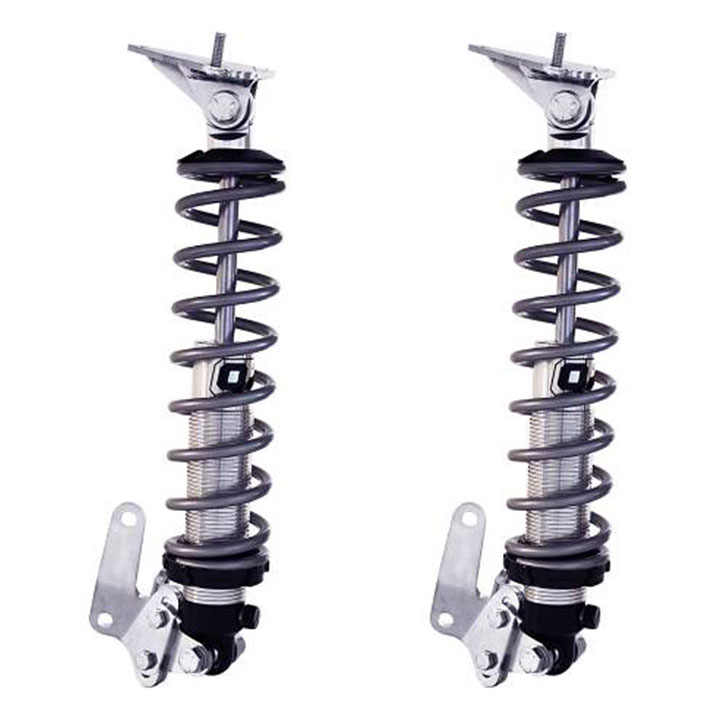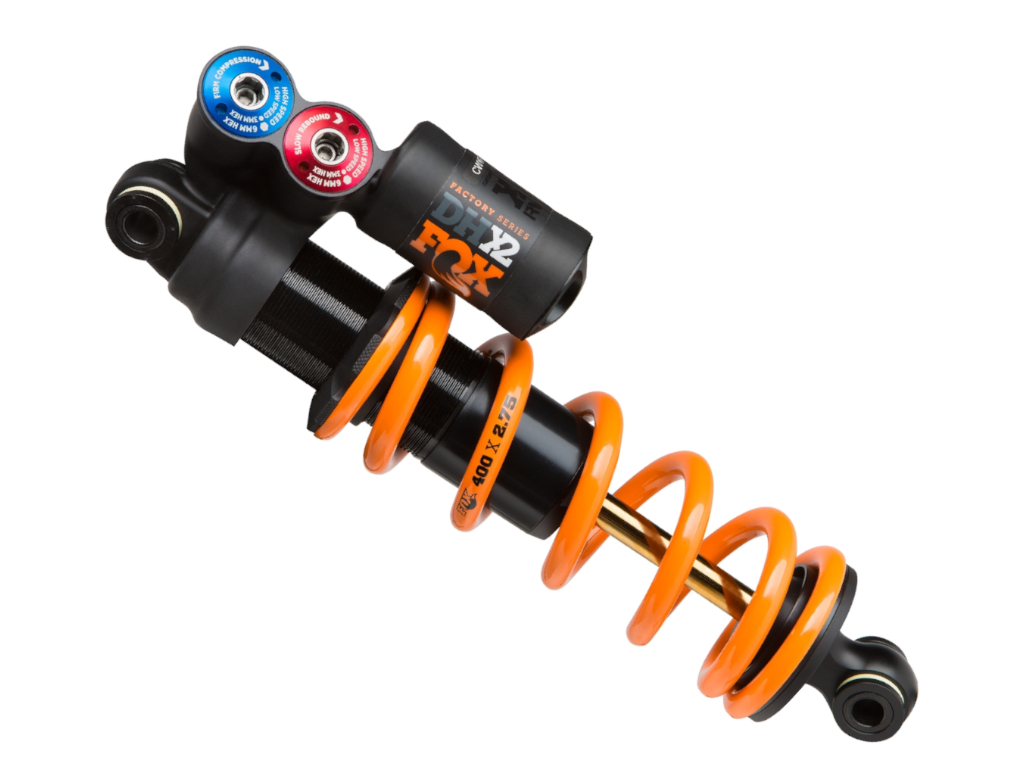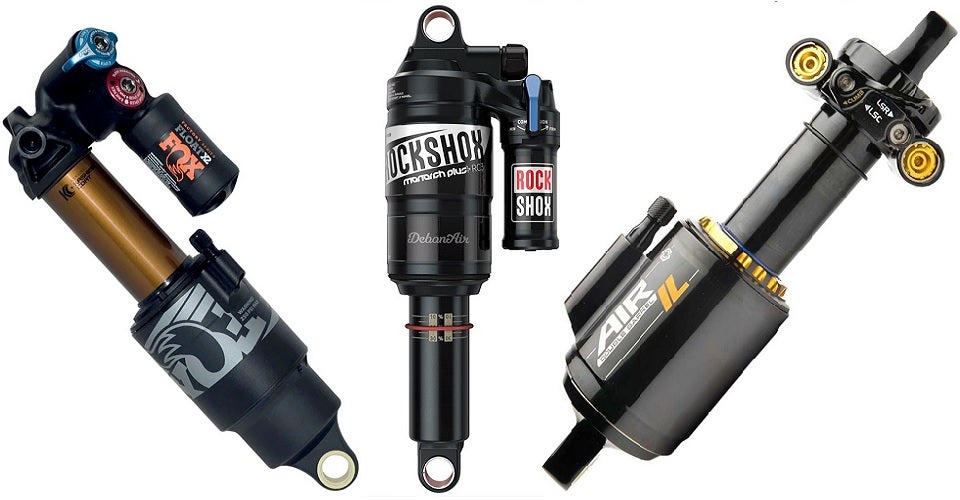What to Look for in a High-Quality 150mm Rear Shock
When searching for the ideal 150mm rear shock, there are several crucial factors to consider to ensure a smooth and enjoyable riding experience. First, evaluate the damping adjustments available on the shock, as these play a significant role in controlling the suspension’s motion and responsiveness. Look for options such as low-speed compression, high-speed compression, and rebound adjustments, which will allow you to fine-tune the shock’s performance to suit your specific riding style and preferences.
Next, decide between an air spring or a coil spring. Air springs are generally lighter and more adjustable, making them suitable for a wide range of rider weights and riding conditions. Coil springs, on the other hand, tend to offer better small-bump sensitivity and consistency, but they are typically heavier and less adjustable than air springs. Your choice will depend on your personal preferences, the type of terrain you’ll be riding on, and the overall weight of your bike.
Lastly, ensure that the 150mm rear shock you choose is compatible with your bike. This includes checking the mounting interface, stroke length, and eye-to-eye dimensions. By carefully considering these factors, you’ll be well on your way to finding the best 150mm rear shock for your needs.
Selecting the Perfect 150mm Rear Shock for Your Biking Style
Your biking style and preferences significantly influence the choice of a 150mm rear shock. By understanding the unique demands of various riding styles, you can select a shock that enhances your performance and overall riding experience.
For downhill riding, where control and durability are paramount, consider a rear shock with a coil spring. Coil shocks tend to offer better small-bump sensitivity and consistency, which can be beneficial when navigating rough, technical terrain at high speeds. Additionally, downhill-specific shocks often feature heavy-duty construction and additional damping adjustments to handle the extreme forces generated during high-speed descents.
Trail riding requires a balance between efficiency, traction, and comfort. For this style, an air spring rear shock is often the preferred choice due to its lighter weight and adjustability. Look for a shock with a wide range of damping adjustments, allowing you to fine-tune the shock’s performance for various trail conditions and sections. Additionally, consider shocks with climbing and pedaling platforms to improve efficiency when tackling ascents.
Enduro riding combines the demands of both downhill and trail riding, necessitating a shock that can handle high-speed descents while still offering pedaling efficiency. Air spring rear shocks are typically the best option for enduro riding, as they provide a good balance between small-bump sensitivity, adjustability, and weight. Prioritize shocks with a broad range of damping adjustments and robust construction to withstand the rigors of enduro racing.
By carefully considering your biking style and preferences, you can narrow down the field of contenders and find the best 150mm rear shock for your needs.
Top Contenders for the Best 150mm Rear Shocks
Having explored the critical factors to consider and the impact of biking styles on your choice, it’s time to introduce the top contenders for the “best 150mm rear shock” title. These products have been carefully selected based on their features, performance, and overall value for money.
1. RockShox Deluxe Select+ RL
The RockShox Deluxe Select+ RL is a versatile performer, offering a wide range of damping adjustments and an air spring. Its DebonAir spring provides excellent small-bump sensitivity, while the RL rebound adjuster allows for fine-tuning of the shock’s responsiveness. Suitable for trail and enduro riding, the Deluxe Select+ RL is a strong candidate for those seeking a high-quality 150mm rear shock.
2. Fox Performance DPX2
The Fox Performance DPX2 is a popular choice among riders who value sensitivity and control. Its three-position lever allows for easy adjustment between open, medium, and firm modes, making it suitable for various trail conditions. The DPX2’s EVOL air spring offers improved small-bump sensitivity, while its bottom-out resistance ensures a smooth ride even on the most challenging terrain.
3. Cane Creek DB Inline Coil IL
For riders who prefer a coil spring, the Cane Creek DB Inline Coil IL is an excellent option. Its twin-tube design provides linear damping, while the Climb Switch technology allows for efficient pedaling. The DB Inline Coil IL is compatible with most modern mountain bikes and is well-suited for downhill and aggressive trail riding.
4. DVO Topaz T3 Air
The DVO Topaz T3 Air is a highly adjustable rear shock, featuring low-speed and high-speed compression, rebound, and air spring pressure adjustments. Its Off the Top (OTT) tuning allows for easy fine-tuning of small-bump sensitivity, making it an excellent choice for riders who want complete control over their suspension setup. The Topaz T3 Air is suitable for various biking styles, including trail, enduro, and downhill.
5. X-Fusion O2 RLC
The X-Fusion O2 RLC is a lightweight and affordable air spring rear shock, offering low-speed compression and rebound adjustments. Its air spring features a dual-chamber design, which allows for easy on-the-fly adjustments to suit varying trail conditions. The O2 RLC is an excellent option for trail and enduro riders looking for a high-quality 150mm rear shock at a competitive price point.
RockShox Deluxe Select+ RL: A Versatile Performer
The RockShox Deluxe Select+ RL is a popular choice among riders looking for a versatile and high-performance 150mm rear shock. This air spring shock offers a range of features that cater to various biking styles and preferences.
Features and Benefits
The Deluxe Select+ RL boasts several impressive features, including the DebonAir spring, which provides excellent small-bump sensitivity and consistent performance throughout the shock’s travel. The RL rebound adjuster allows for fine-tuning of the shock’s responsiveness, ensuring a smooth ride regardless of the terrain.
Additionally, the Deluxe Select+ RL features a Rapid Recovery rebound damper, which helps the shock recover more quickly between consecutive bumps, minimizing the “packing” effect that can occur during high-frequency compressions. This makes the shock particularly well-suited for trail and enduro riding, where consistent performance and small-bump sensitivity are crucial.
Potential Drawbacks
While the RockShox Deluxe Select+ RL offers many benefits, there are a few potential drawbacks to consider. For instance, the shock does not offer low-speed compression adjustments, which some riders may find limiting. Additionally, the Deluxe Select+ RL may not provide the same level of durability as some coil shocks, particularly in extreme downhill conditions.
Compatibility and Adjustability
The RockShox Deluxe Select+ RL is compatible with most modern mountain bikes and features a wide range of adjustability options. The shock’s air spring pressure can be easily adjusted using a shock pump, allowing riders to fine-tune the shock’s performance to suit their specific weight and riding style. Furthermore, the RL rebound adjuster enables riders to dial in the shock’s responsiveness, ensuring optimal performance on various trails and terrains.
Conclusion
In summary, the RockShox Deluxe Select+ RL is a versatile and high-performance 150mm rear shock that caters to a wide range of biking styles and preferences. Its DebonAir spring, Rapid Recovery rebound damper, and air spring pressure adjustability make it an excellent choice for trail and enduro riders, while its lightweight design and competitive pricing make it an attractive option for those seeking value for money. However, riders who prioritize low-speed compression adjustments or extreme durability may want to explore alternative options.
Fox Performance DPX2: A Balanced Combination of Sensitivity and Control
The Fox Performance DPX2 is a highly regarded 150mm rear shock that offers an impressive balance of sensitivity and control, making it a strong contender for the “best 150mm rear shock” title. This air spring shock is suitable for various biking styles and preferences, including trail, enduro, and downhill riding.
Features and Benefits
The Fox Performance DPX2 boasts several features that contribute to its outstanding performance. Its three-position lever allows riders to easily switch between open, medium, and firm modes, ensuring optimal performance on various terrains and riding conditions. The shock’s EVOL air spring provides improved small-bump sensitivity, while its bottom-out resistance ensures a smooth ride even on the most challenging trails.
Additionally, the DPX2 features a patented Variable Valve Control (VVC) system, which enables fine-tuning of the shock’s compression damping. This feature allows riders to adapt the shock’s performance to their specific riding style and preferences, further enhancing its versatility and appeal.
Performance and Adjustability
The Fox Performance DPX2 delivers impressive performance across a wide range of riding styles and terrains. Its sensitivity and control make it an excellent choice for trail and enduro riders, while its firm mode provides the necessary support and stability for downhill riding. The shock’s air spring pressure can be easily adjusted using a shock pump, allowing riders to fine-tune the shock’s performance to suit their specific weight and riding style.
Value for Money
While the Fox Performance DPX2 is not the most affordable 150mm rear shock on the market, its performance, adjustability, and durability make it an excellent investment for serious riders. Its versatility and compatibility with various biking styles make it a valuable addition to any mountain bike, ensuring optimal performance and enjoyment on the trail.
Conclusion
In summary, the Fox Performance DPX2 is a high-quality 150mm rear shock that offers an impressive balance of sensitivity and control, making it suitable for various biking styles and preferences. Its features, performance, and adjustability make it a strong contender for the “best 150mm rear shock” title. While it may be more expensive than some alternatives, its versatility, durability, and overall value for money make it an attractive option for serious riders seeking a top-performing shock.
How to Maintain Your 150mm Rear Shock for Optimal Performance
Regular maintenance is crucial for ensuring the longevity and optimal performance of your 150mm rear shock. By following these simple steps, you can keep your shock in excellent condition and maximize its lifespan.
Cleaning Your Rear Shock
Begin by cleaning your rear shock with a soft brush and mild soap, removing any dirt, debris, or mud that has accumulated on its exterior. Be gentle when cleaning, as excessive force may damage the shock’s seals or finish. After cleaning, rinse the shock thoroughly with water and dry it with a clean towel.
Lubricating Your Rear Shock
To maintain your rear shock’s smooth operation, apply a high-quality suspension lubricant to its seals and pivot points. This will help reduce friction and wear, ensuring consistent performance and extending the shock’s lifespan. Be sure to follow the manufacturer’s recommendations for lubricant type and application frequency.
Adjusting Air Pressure
Proper air pressure is essential for maintaining your rear shock’s performance and ensuring a comfortable ride. Use a shock pump to check and adjust the air pressure as needed, following the manufacturer’s recommendations for your specific weight and riding style. Regularly monitoring and adjusting air pressure can help prevent damage to the shock and improve its overall performance.
Servicing Your Rear Shock
Periodically, it’s essential to have your rear shock serviced by a professional mechanic. A complete service typically includes disassembling the shock, cleaning and inspecting its internal components, replacing worn or damaged parts, and reassembling the shock with fresh lubricant. Regular servicing can help prevent catastrophic failures and ensure your shock continues to perform at its best.
Additional Maintenance Tips
To further extend the lifespan of your 150mm rear shock, consider the following tips:
- Avoid exposing your shock to extreme temperatures or harsh environmental conditions.
- Inspect your shock regularly for signs of damage, such as leaks, cracks, or excessive wear.
- Store your shock in a cool, dry place when not in use, and protect it from impacts or damage during transportation.
By following these maintenance guidelines, you can help ensure your 150mm rear shock remains in optimal condition, providing you with a smooth and enjoyable riding experience for years to come.
Maximizing the Longevity of Your 150mm Rear Shock: Top Tips
To ensure your 150mm rear shock continues to perform at its best and lasts as long as possible, follow these expert tips for extending its lifespan and minimizing wear and tear.
1. Proper Installation
Ensure your rear shock is correctly installed and properly aligned with your bike’s frame. Improper installation can lead to premature wear, reduced performance, and even catastrophic failure. Consult your bike’s manual or a professional mechanic if you are unsure about the installation process.
2. Regular Inspections
Inspect your rear shock regularly for signs of damage, such as leaks, cracks, or excessive wear. Catching issues early can prevent further damage and ensure your shock continues to perform at its best. If you notice any problems, consult a professional mechanic for advice and repair options.
3. Prevent Overheating
Excessive heat can damage your rear shock’s internal components and reduce its lifespan. To prevent overheating, avoid prolonged high-speed descents or extended periods of aggressive riding. Additionally, ensure your shock’s cooling fins are free of debris and obstructions, allowing for proper heat dissipation.
4. Correct Air Pressure
Maintaining the correct air pressure in your rear shock is crucial for its longevity and performance. Regularly check and adjust the air pressure as needed, following the manufacturer’s recommendations for your specific weight and riding style. Incorrect air pressure can lead to reduced performance, premature wear, and even damage to the shock.
5. Proper Maintenance
Regular maintenance, such as cleaning, lubricating, and servicing your rear shock, can significantly extend its lifespan and ensure optimal performance. Follow the manufacturer’s recommendations for maintenance frequency and procedures, and consult a professional mechanic if you are unsure about any aspect of the maintenance process.
6. Avoid Extreme Conditions
Exposure to extreme temperatures, harsh environmental conditions, and impacts can damage your rear shock and reduce its lifespan. Store your shock in a cool, dry place when not in use, and protect it from impacts or damage during transportation. Additionally, avoid exposing your shock to excessive moisture, salt, or sand, which can cause corrosion and other forms of damage.
7. Upgrade When Necessary
If your rear shock is no longer performing as well as it once did, or if it shows signs of significant wear or damage, consider upgrading to a newer, higher-quality shock. While upgrading can be an investment, it can ultimately save you money by preventing the need for frequent repairs and replacements.
By following these tips, you can help ensure your 150mm rear shock continues to perform at its best and lasts as long as possible, providing you with a smooth and enjoyable riding experience for years to come.
FAQs: Clearing Up Your Questions on 150mm Rear Shocks
To help you make an informed decision when choosing the best 150mm rear shock for your needs, we’ve compiled a list of frequently asked questions and provided clear, concise answers.
1. What is the difference between air and coil rear shocks?
Air shocks are generally lighter and more adjustable than coil shocks, making them suitable for a wide range of rider weights and riding conditions. Coil shocks, on the other hand, tend to offer better small-bump sensitivity and consistency, but they are typically heavier and less adjustable than air shocks.
2. How do damping adjustments affect my rear shock’s performance?
Damping adjustments control the suspension’s motion and responsiveness. Low-speed compression damping adjustments affect the shock’s performance during slow-speed maneuvers, such as cornering and climbing, while high-speed compression damping adjustments control the shock’s response during high-speed impacts, such as those experienced during downhill riding.
3. Can I use a 150mm rear shock on any mountain bike?
No, compatibility with your bike is an essential factor to consider when choosing a 150mm rear shock. Ensure that the shock’s mounting interface, stroke length, and eye-to-eye dimensions match those of your bike’s frame and rear suspension system.
4. How often should I service my rear shock?
The frequency of rear shock servicing depends on the manufacturer’s recommendations and the amount of use. Generally, it’s a good idea to have your shock serviced at least once a year, or more frequently if you ride often or in harsh conditions.
5. How do I choose the right air pressure for my rear shock?
The correct air pressure for your rear shock depends on your specific weight and riding style. Consult your shock’s manual or the manufacturer’s website for recommendations, and regularly check and adjust the air pressure as needed to ensure optimal performance and longevity.
6. Are more expensive rear shocks always better?
Not necessarily. While higher-priced rear shocks often offer more advanced features and better performance, they may not always provide the best value for money. Carefully consider your specific needs, preferences, and budget when choosing the best 150mm rear shock for your bike.
7. Can I upgrade my rear shock without upgrading my fork?
Yes, you can upgrade your rear shock independently of your fork. However, it’s essential to ensure that both your fork and rear shock are compatible and properly tuned to work together, as they play a crucial role in your bike’s overall suspension performance.
By addressing these common questions and misconceptions, we hope to have provided you with valuable insights and clarified any uncertainties regarding 150mm rear shocks. With this information, you can make an informed decision and choose the best shock for your biking style and preferences.







